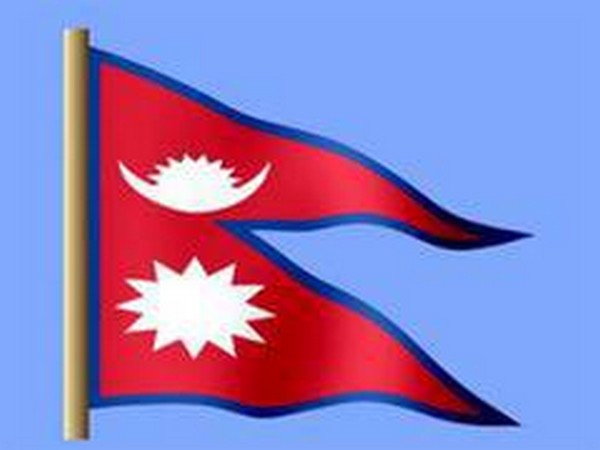Kathmandu [Nepal], August 21 (ANI): Nepal on Wednesday objected to the agreement between India and China to open a trade route via Lipulekh, asserting its claim over the land.
Responding to media queries, the Ministry of Foreign Affairs on Wednesday issued three points, asserting claims over the land and objecting to the unilateral move by China and India.
“The Nepalese government is clear that the official map of Nepal has been included in the constitution of Nepal and that the map shows Limpiyadhura, Lipulekh and Kalapani east of the Mahakali River as integral parts of Nepal,” the first point of the press statement reads.
Nepal maintains that Lipulekh, including Kalapani and Limpiyadhura, belongs to Nepal according to the Sugauli Treaty of 1816.
Furthermore, the Ministry reiterated previous diplomatic attempts and communications with both countries, asserting Lipulekh to be Nepali territory.
“It is also known that the Nepalese government has been urging the Indian government not to undertake any activities such as road construction/expansion, border trade in the area. It is also known that the friendly country, China, has been informed that the area is Nepali territory.”
India and China have agreed to reopen border trade through Lipulekh Pass, a point located 56 kilometres inside Nepal’s western frontier in Limpiyadhura. The agreement was made during Chinese Foreign Minister Wang Yi’s visit to India.
Both countries agreed during a meeting between Indian External Affairs Minister S Jaishankar and Chinese Foreign Minister Wang Yi. Point nine of the joint communique mentions the resumption of border trade.
“Both sides agreed to the re-opening of border trade through the three designated trading points, namely Lipulekh Pass, Shipki La Pass and Nathu La Pass.”
Nepal in 2020 amended its constitution, incorporating a new political and administrative map in the preamble. The new map included the tri-junction of Limpiyadhura, Kalapani and Lipulekh, which has remained a disputed area between Nepal and India.
Nepal’s updated map, prepared incorporating the missing territories, was submitted to the Ministry of Land Management by the Department of Survey, which claims to have taken accurate scale, projection and coordinate system. It was publicly released on May 20, 2020 after a go-ahead signal from the Cabinet meeting on 18 May the same year.
The department has collected a map drawn during the Treaty of Sugauli, another brought from London, receipts of payment of land revenues, and the order issued by then Prime Minister Chandra Shumsher, as evidence to claim that the land belongs to Nepal.
The earlier map issued in 2032 BS had left out Gunji, Nabhi and Kuri villages, which have now been included in the latest revised map, adding 335 square kilometres of land.
With prolonged claims and disputes about the border, the Nepali Foreign Ministry also stated that it is committed to resolving the border issue between the two countries through diplomatic means.
“In accordance with the spirit of the close and friendly relations between Nepal and India, the Nepalese government has been committed to resolving the border issue between the two countries through diplomatic means on the basis of historical treaties, agreements, facts, maps and evidence,” the Ministry of Foreign Affairs stated.
India’s position is that the Kalapani region, including Lipulekh and Limpiyadhura, is part of its territory. This claim is based on India’s interpretation of the Sugauli Treaty of 1816, which defined the border with Nepal based on the Kali River. India maintains that the river originates at the Kalapani village, while Nepal argues it originates further north, at Limpiyadhura. This difference in interpretation leads to the disputed territory.
Tensions had flared between New Delhi and Kathmandu in 2020 after Nepal issued its political map in mid-May, which included the tri-junction that India had excluded from its November 2019 map.
Diplomatic ties between the nations were further strained after the inauguration of a road linking Kailash Mansarovar via Lipulekh on May 8, 2020, after which Nepal handed over a diplomatic note to India objecting to the move.
Prior to the handover of the diplomatic note, Nepal had also strongly objected to India’s unilateral move to construct the road. Nepal said it has “consistently maintained” that as per the Sugauli Treaty (1816), “all the territories east of Kali (Mahakali) river, including Limpiyadhura, Kalapani and Lipu Lekh, belong to Nepal.”
The Indian Defence Ministry had said the Border Roads Organisation (BRO) in Uttarakhand has connected the Kailash Mansarovar route to Lipulekh Pass, which will provide connectivity to border villages and security forces.
India and China discussed the Lipulekh Pass for the first time during the 2015 visit to China by Prime Minister Narendra Modi. During PM Modi’s visit, then Chinese Premier Li Keqiang agreed to expand trade via Lipulekh. The joint statement issued on May 15, 2015, included the agreement in point 28.
The 2015 decision triggered strong protests in Nepal as the agreement was reached without its consultation, despite the pass lying within Nepali territory. The Nepal government formally objected at the time, sending diplomatic notes to both countries.
With India and China working to improve strained relations following the 2020 Galwan Valley clashes, both sides have once again agreed to open trade through Lipulekh. Nepal’s official map includes Lipulekh within its territory.
In 2023, China released a new map showing Lipulekh, Kalapani, and Limpiyadhura as part of India, further complicating the dispute.
The agreement comes ahead of Prime Minister KP Sharma Oli’s visits to India and China–he will first attend the Shanghai Cooperation Organisation summit in China from August 31 to September 1, then proceed to India for an official visit starting September 16.
Meanwhile, India on Wednesday rejected Nepal’s territorial claims over Lipulekh Pass, stating that the claims are “neither justified nor based on historical facts and evidence”.
The Ministry of External Affairs (MEA) emphasised that India remains open to constructive interaction with Nepal to resolve outstanding boundary issues through dialogue and diplomacy.
MEA spokesperson Randhir Jaiswal reiterated that India’s position on the issue remains consistent and clear, emphasising that border trade between India and China through Lipulekh Pass has been ongoing since 1954.
The ministry said that the claims made by Nepal are neither justified nor based on historical facts and evidence.
“Our position in this regard has been consistent and clear. Border trade between India and China through Lipulekh pass had commenced in 1954 and has been going on for decades. This trade had been disrupted in recent years due to Covid and other developments, and both sides have now agreed to resume it,” said Jaiswal.
“As regards territorial claims, our position remains that such claims are neither justified nor based on historical facts and evidence. Any unilateral artificial enlargement of territorial claims is untenable. India remains open to constructive interaction with Nepal on resolving agreed outstanding boundary issues through dialogue and diplomacy,” he added.(ANI)
Disclaimer: This story is auto-generated from a syndicated feed of ANI; only the image & headline may have been reworked by News Services Division of World News Network Inc Ltd and Palghar News and Pune News and World News
HINDI, MARATHI, GUJARATI, TAMIL, TELUGU, BENGALI, KANNADA, ORIYA, PUNJABI, URDU, MALAYALAM
For more details and packages















